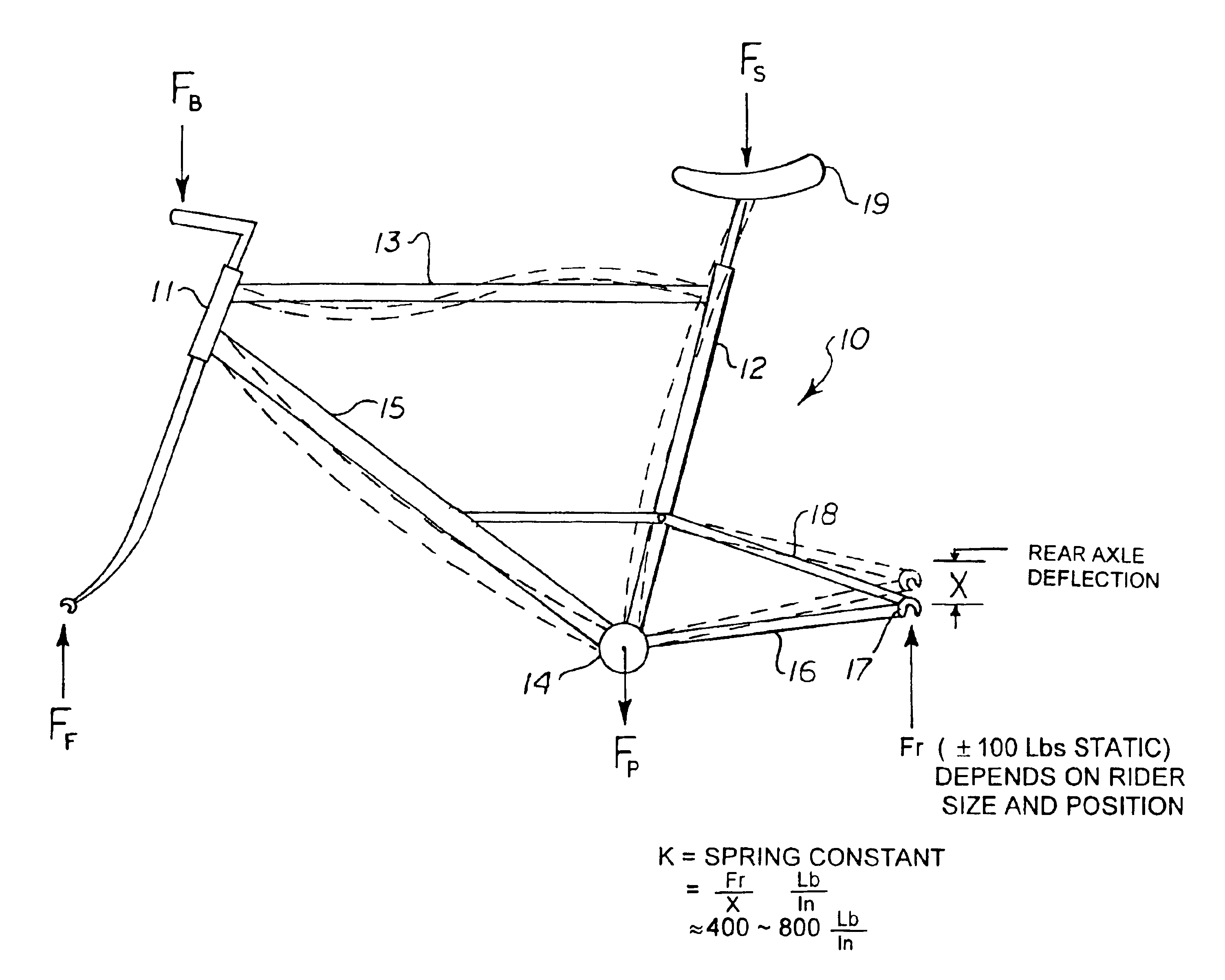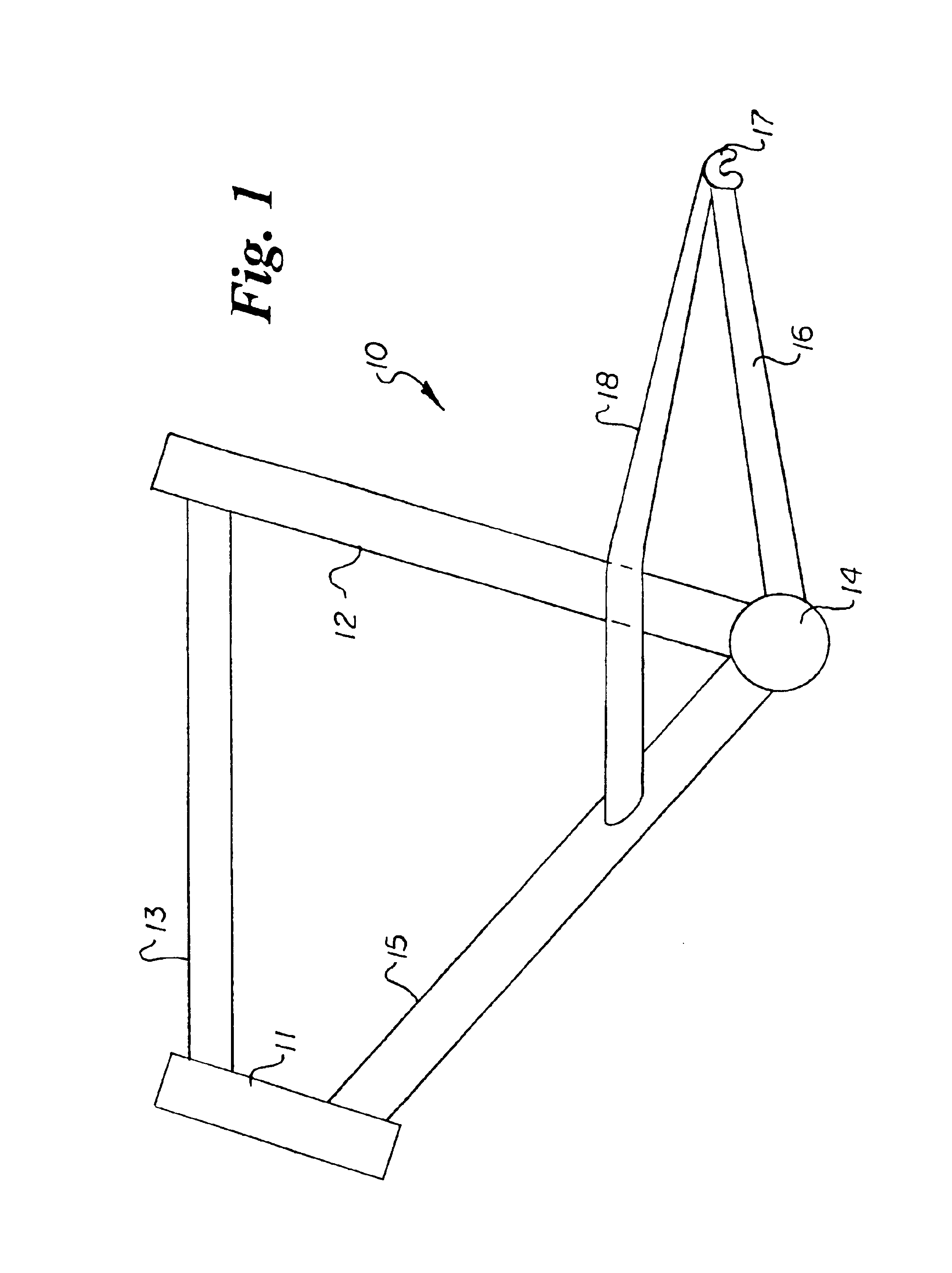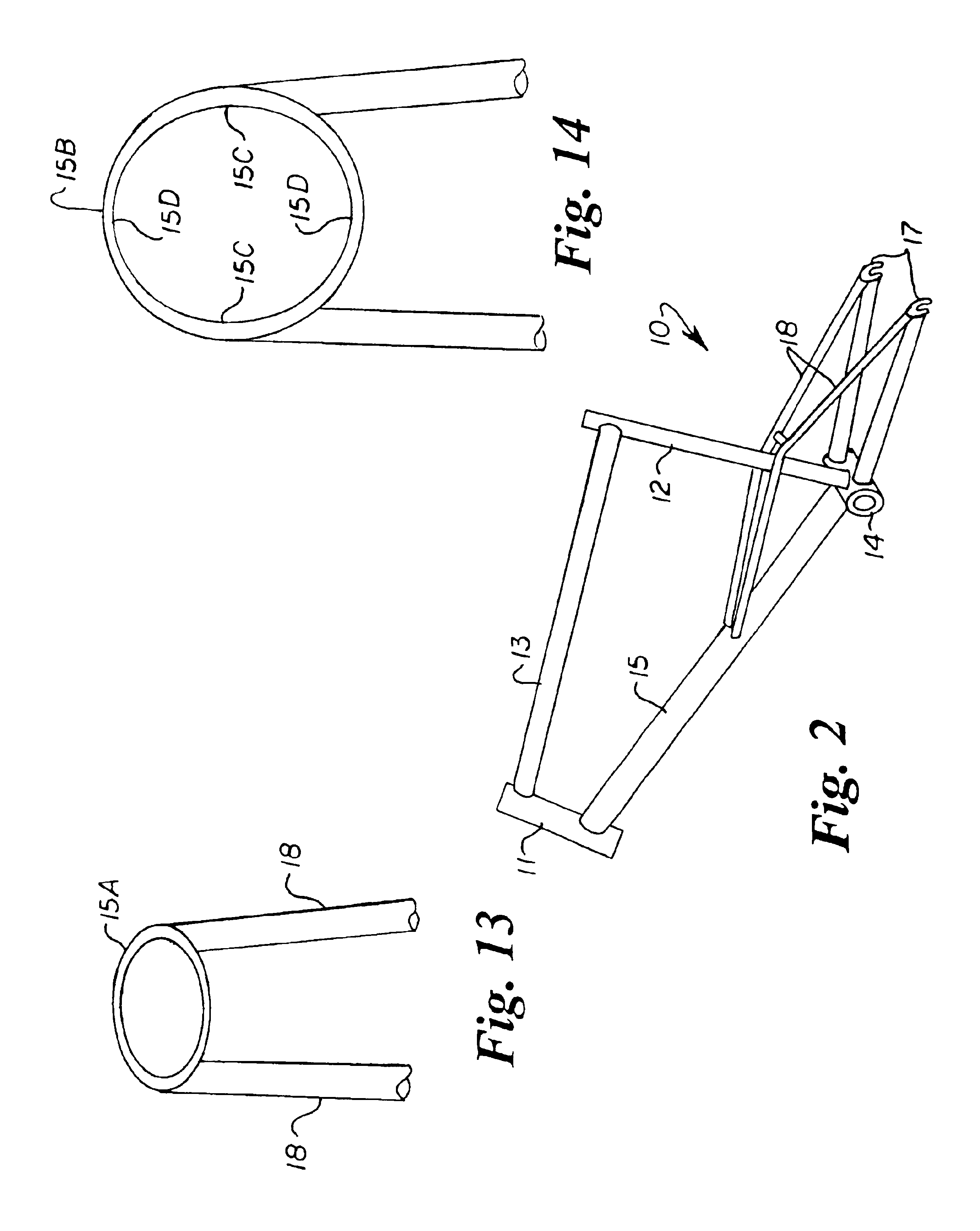Bicycle frame with rear passive suspension
a technology of passive suspension and bicycle frame, which is applied in the direction of friction roller based transmission, steering device, cycle equipment, etc., can solve the problems of reducing power transmission, adding too much weight, and limiting the flexibility of curved seat stays, so as to preserve or improve handling, maintain or improve rigidity, and isolate the rider
- Summary
- Abstract
- Description
- Claims
- Application Information
AI Technical Summary
Benefits of technology
Problems solved by technology
Method used
Image
Examples
Embodiment Construction
[0037]Referring to the drawings by numerals of reference, there is shown in FIGS. 1-3, a preferred bicycle frame 10 having a rear passive suspension system in accordance with the present invention. The present frame 10 has a head tube 11, a seat tube 12, a top tube 13 extending therebetween, a bottom bracket shell 14 at the bottom end of the seat tube, a down tube 15 extending angularly between the head tube and the bottom bracket shell, a pair of laterally spaced lower chain stay members 16 extending rearwardly from the bottom bracket shell, and a pair of laterally opposed rear wheel dropout brackets 17, one at the rear end of each lower chain stay member.
[0038]The present bicycle frame 10 eliminates the seat stays of a conventional road (or similarly designed cyclocross, hardtail mountain, hybrid, or city) bicycle frame and adds a second set of laterally spaced chain stays 18 (hereinafter referred to as upper chain stays 18) that connect the rear wheel with the bottom portions of ...
PUM
 Login to View More
Login to View More Abstract
Description
Claims
Application Information
 Login to View More
Login to View More - Generate Ideas
- Intellectual Property
- Life Sciences
- Materials
- Tech Scout
- Unparalleled Data Quality
- Higher Quality Content
- 60% Fewer Hallucinations
Browse by: Latest US Patents, China's latest patents, Technical Efficacy Thesaurus, Application Domain, Technology Topic, Popular Technical Reports.
© 2025 PatSnap. All rights reserved.Legal|Privacy policy|Modern Slavery Act Transparency Statement|Sitemap|About US| Contact US: help@patsnap.com



